
detached visitor
The site of Auschwitz-Birkenau exists as a tourist attraction. Visitors are detached, not only because they are sightseers or apathetic teenagers, but because their minds cannot come to terms with the dimension of the events that took place on the site.
When toursits plan on visiting a concentration camp, they expect dark, overcast skies and an ostensibly dead environment. Consequently, the unseemly beauty of the landscape is unnerving. During war-time there was not a single blade of grass on site because they were literally consumed by the starved prisoners of the camp. The lush green grass currently growing is out of place.
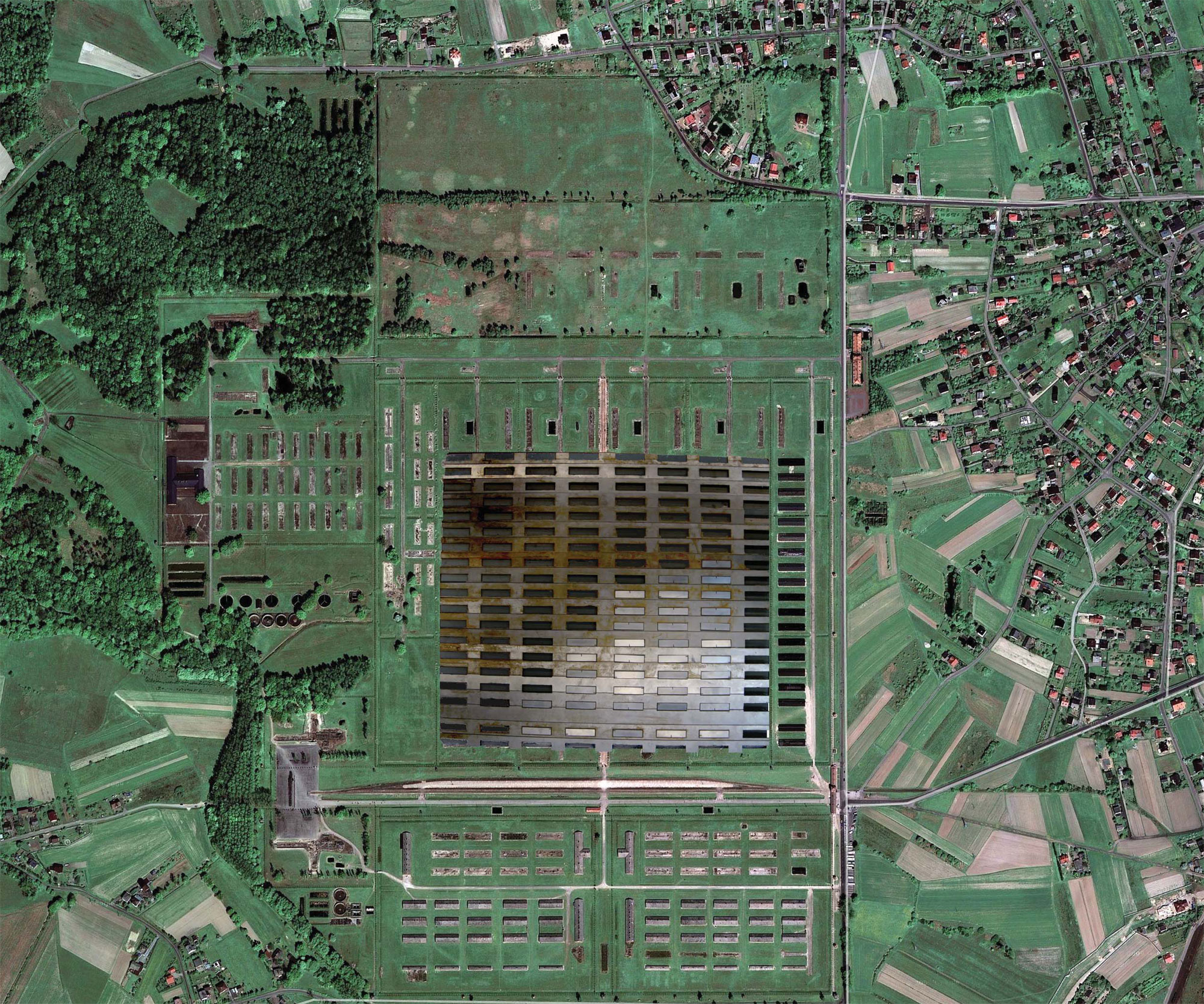
Bearing the massiveness of the site and the sanctity of the ground in mind, I am proposing the intervention of a new ground plane that would exist over the largest field of ruins on the site. Rather than instilling a specific emotion in the visitor (anger, sadness, fear), this new ground plane would re-frame the site and simply act as an enabler, allowing the most detached of visitors to engage the site in their own way. Visitors first walk alongside the intervention, viewing the newly framed ruins and the existing barrack structures at the same time. They can then begin to move up the surface of the new ground plane; all the while, aware of what they are above, mindful of their simultaneous distance and presence.
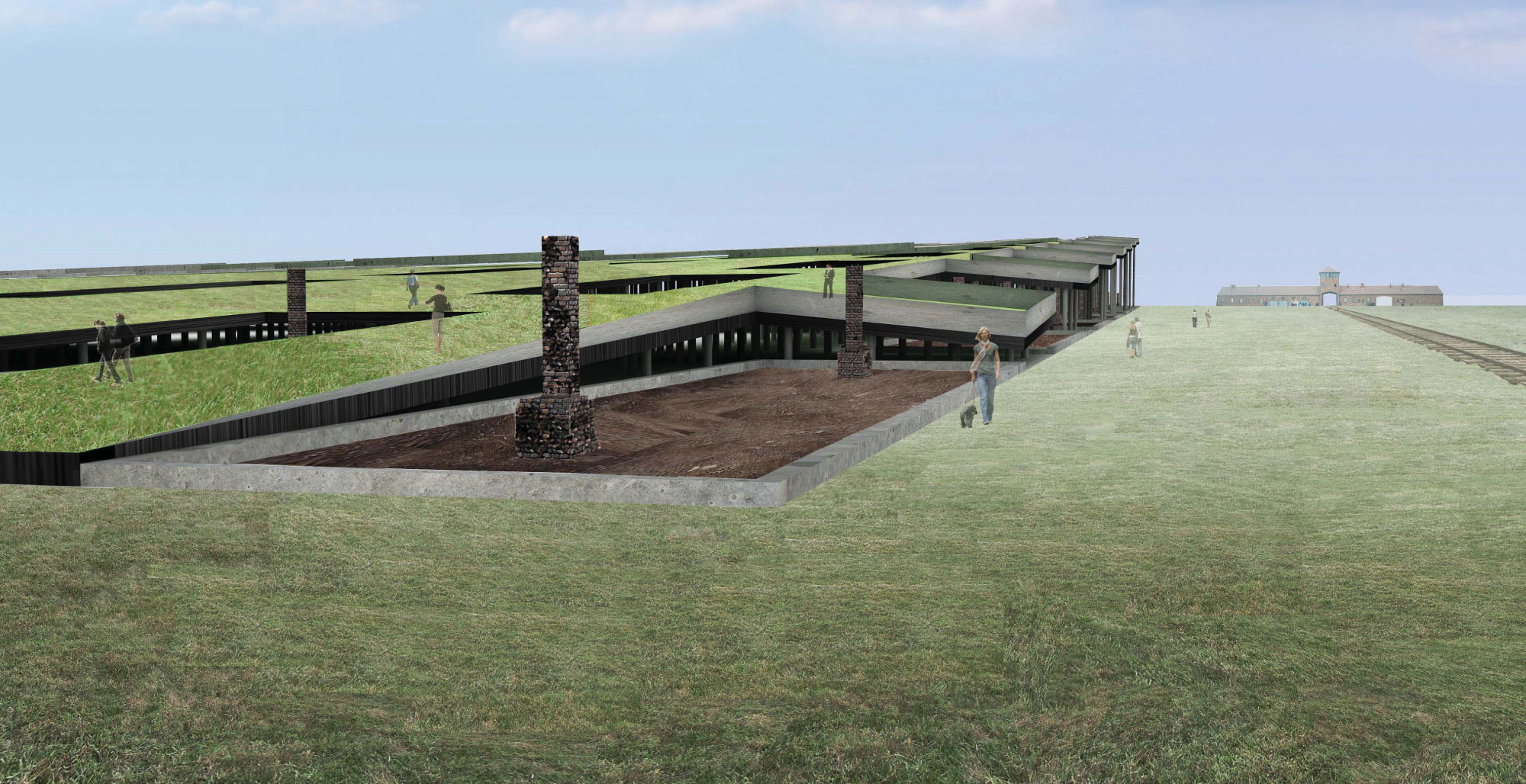
The ground plane would be traversable, starting at ground zero and sloping up to a height of sixty feet, towering over the ruins below. This position of height not only allows the visitors to grasp the extents of the camp, it also permits them to view the adjacent town, whose medieval plan starkly contrasts the rigid grid of the concentration camp.

The stark contrast between the traversable face of the new ground plane versus its dark underside is emphasized with the implementation of vegetation in a green roof system. The ground plane infrastructure would, overtime, create a dead landscape below by blocking the light from the vegetation surrounding the ruins. The dichotomy between the park-like green and the dead landscape creates a plethora of ways to engage the site.
The underside of the ground plane is marked by the column structure that form a forest-like field. The columns are laid out on a diagonal grid, which make them appear at once irregular and ordered. As one walks along the edge of the intervention ruins go in an out of focus within their new disorienting, relentlessly repetitive forest.
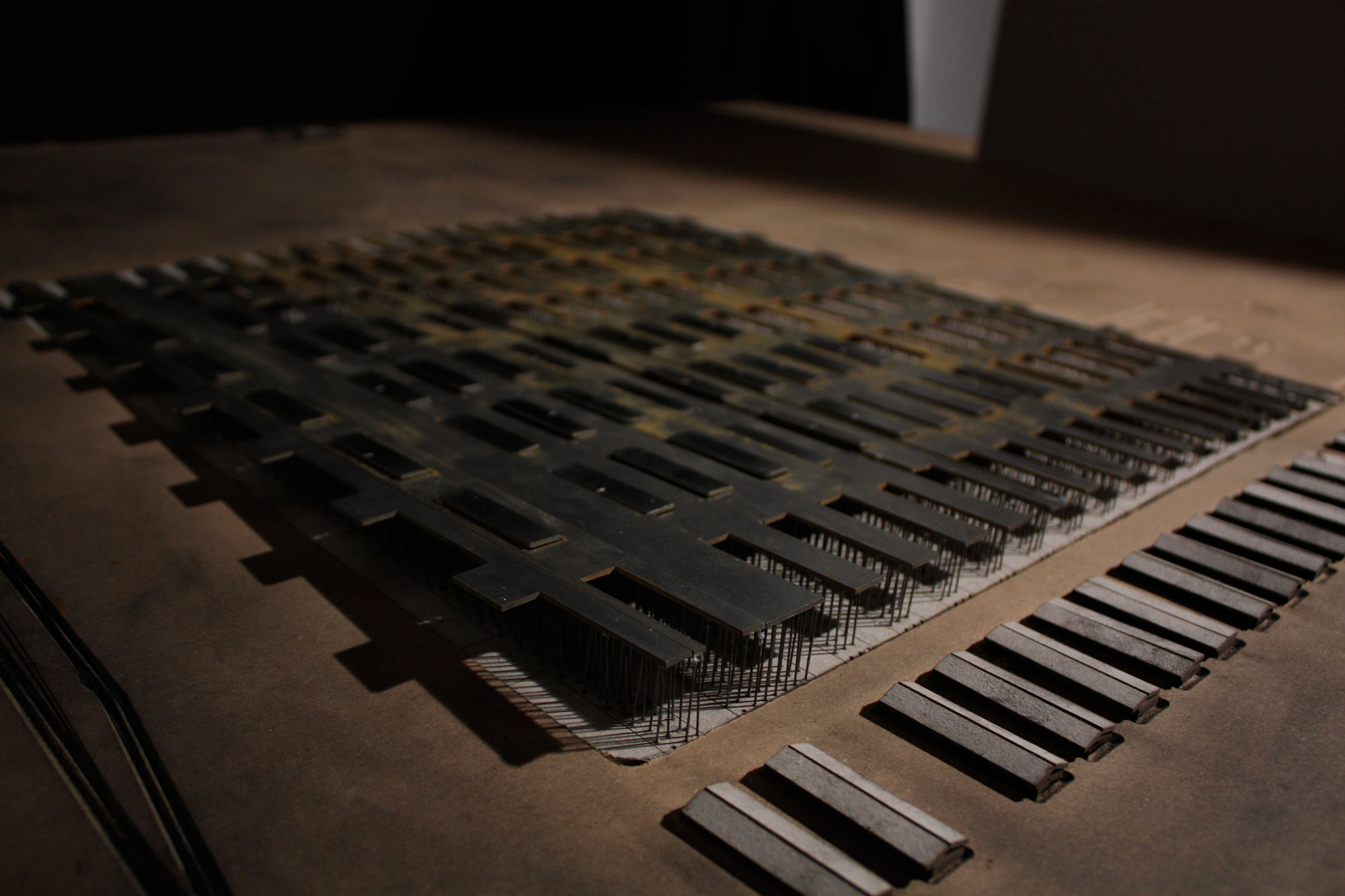
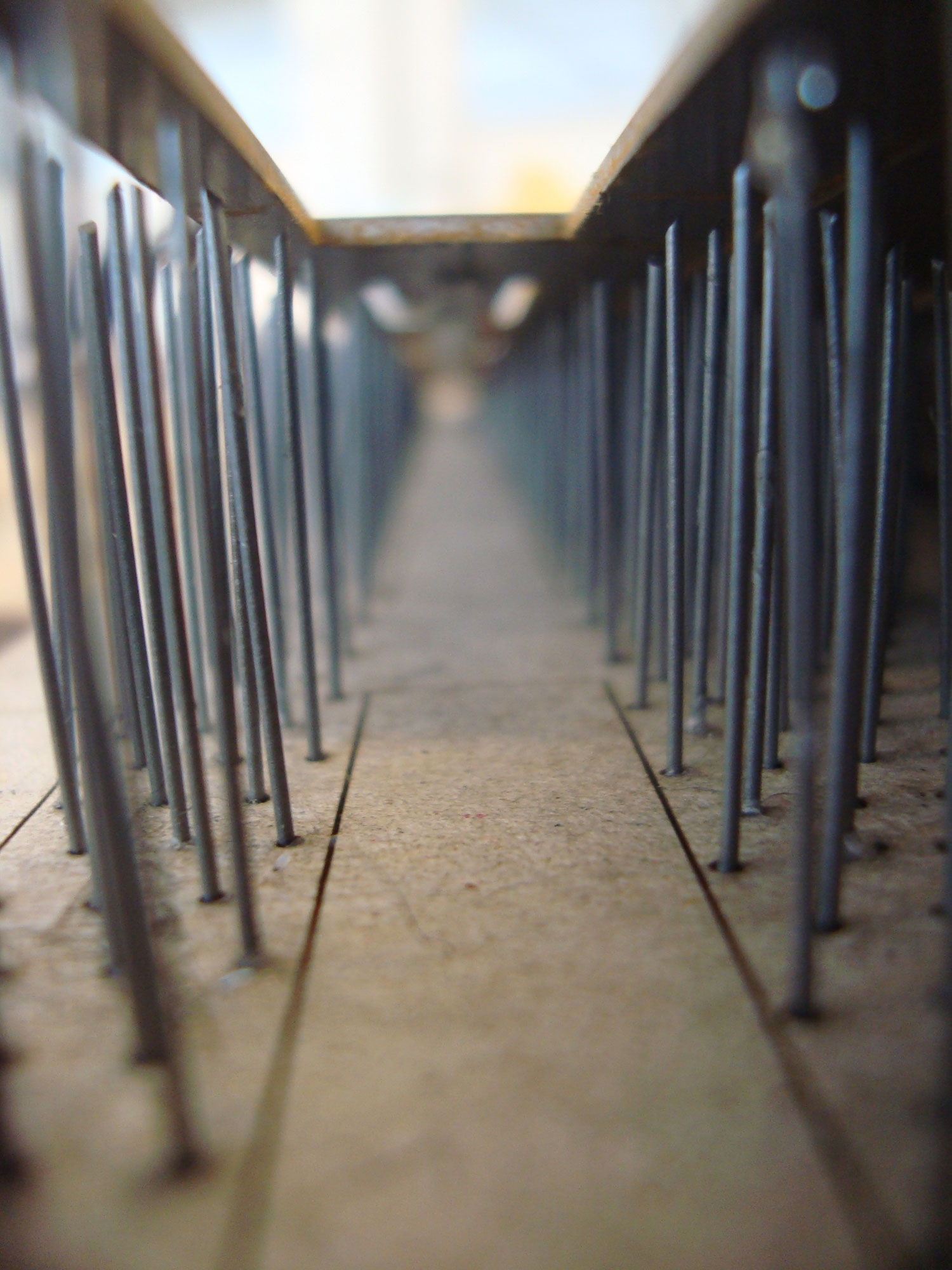
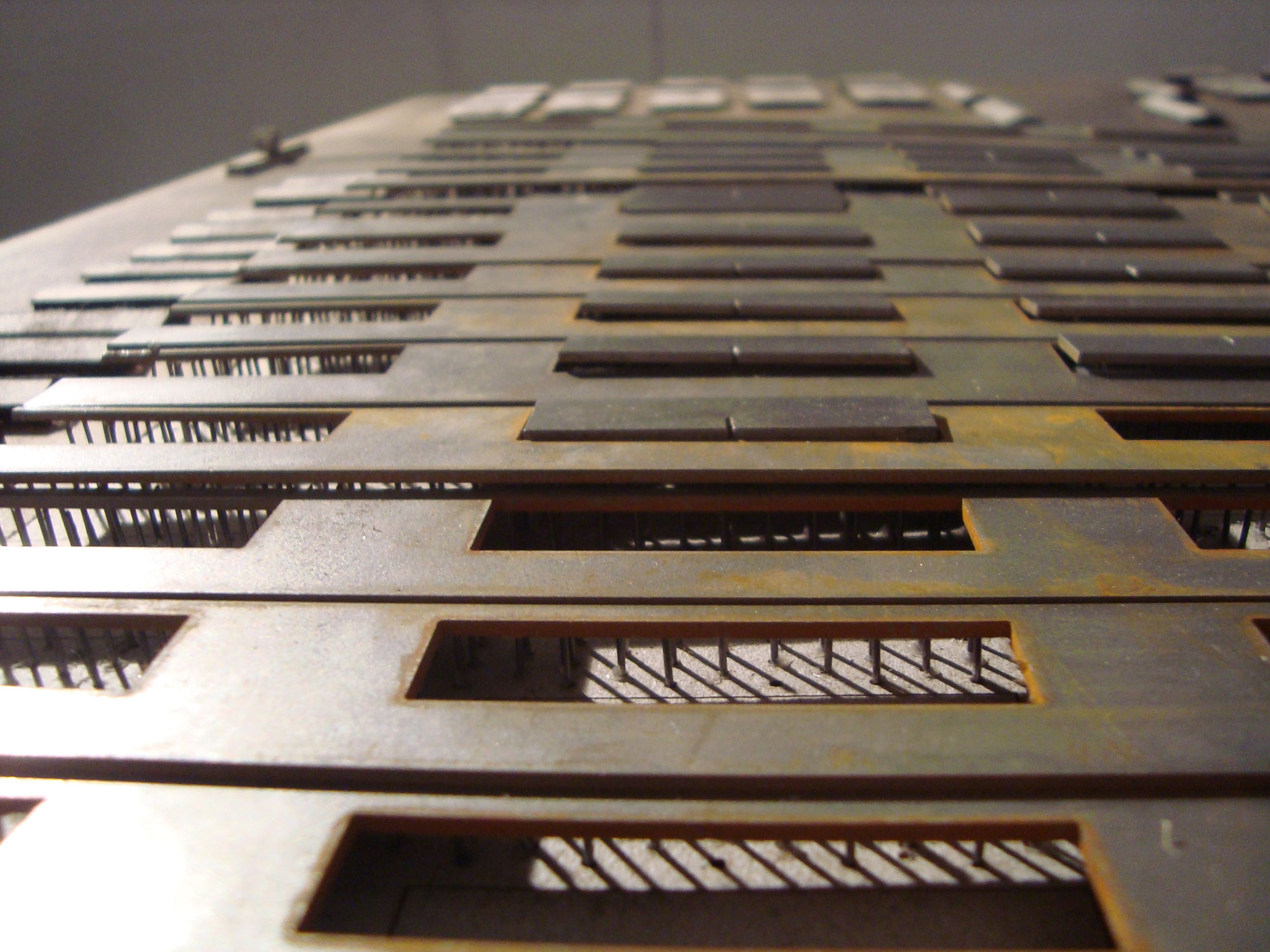


Thesis Advisers:
Val Warke
Vince Mulcahy